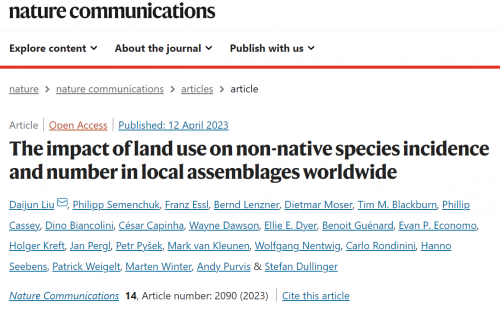While the regional distribution of non-native species is increasingly well documented for some taxa, global analyses of non-native species in local assemblages are still missing. Here, some scientists including Dr. Benoit Guénarduse use a worldwide collection of assemblages from five taxa – ants, birds, mammals, spiders and vascular plants – to assess whether the incidence, frequency and proportions of naturalised non-native species depend on type and intensity of land use. In plants, assemblages of primary vegetation are least invaded. In the other taxa, primary vegetation is among the least invaded land-use types, but one or several other types have equally low levels of occurrence, frequency and proportions of non-native species. High land use intensity is associated with higher non-native incidence and frequency in primary vegetation, while intensity effects are inconsistent for other land-use types. These findings highlight the potential dual role of unused primary vegetation in preserving native biodiversity and in conferring resistance against biological invasions.
The journal paper can be addressed here


